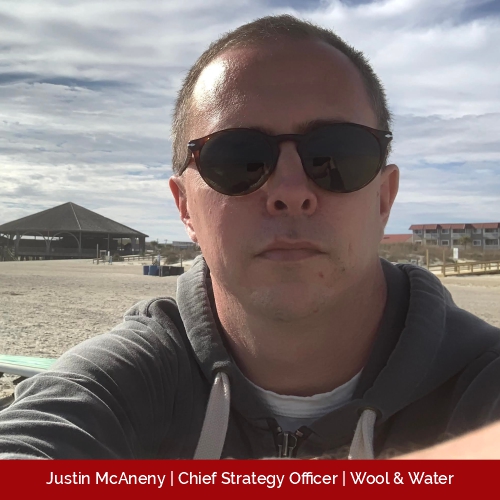Trending
October 28, 2024
October 27, 2024
October 25, 2024


Over the past few years, the shift to digital transformation has been constantly accelerating. The changes brought about by this shift are visible among all the industry verticals. Obviously, the outbreak of the COVID-19 pandemic has had a major role in this. Particularly in the IoT and e-commerce sectors, we have seen the impacts of digital transformation during the pandemic period. The ways of accessing information and data, as well as connecting with one another have significantly changed and become much faster and easier.
The use of QR codes, for instance, was often overlooked although being used globally for decades. Thanks to the pandemic, the QR codes now appear in TV commercials in the U.S. Augmented Reality (AR) was initially thought to be childish filters on Instagram and Snapchat. However, they are now being overlayed into pro sports events and arenas to enhance the viewer’s experience.
Companies like Wool and Water are leading the evolution of these changes. Thinking beyond the AR and VR experience, the company is creating a seamless and smooth user experience that uses mixed reality for commerce—which it refers to as “Extended Retail™.” Technologies like AR and VR can be fun, however, for them to be recognized as a serious commodity for brands, they need to drive revenue. This is where Wool and Water comes in.

Wool and Water is a brainchild of Justin McAneny and Jeff Bodzewski. The duo has been leveraging their immense experience to drive the company towards growth since its inception. Justin has more than 15 years of experience using digital strategies and storytelling to help companies monetize their web properties, social media, and emerging tech. A generalist among digital strategists, Justin has found success reaching consumers at scale using various digital touchpoints. Jeff, on the other hand, has been a trusted counselor to brands including Google, Boston Beer, Unilever, Lyft, Discover Financial, and AT&T—helping them drive revenue.
Wool and Water’s roots date back to a chance conversation between Justin and Jeff, in which they were discussing what would happen to retail during and after COVID. Coming from a digitally strategic background grounded in generating an action (sale, lead, etc.), the duo noticed that everyone jumped on the e-commerce bandwagon during the pandemic with no real innovation. Witnessing curbside pickup and chatbots being repurposed as digital innovation, the duo reckoned the same fact that this was not innovation, this was a technology that was a few years old. Thus, Wool and Water was established in 2021 by passionate retail advocates and creative strategists who were frustrated by the belief that the world is using technology to its fullest potential.
Expressing his views on the current situation, Justin asserts, “I’d have to confirm the numbers, but I believe that e-commerce is returning to pre-pandemic levels and the Peloton bubble burst.” However, customers still want to shop without physically going to the stores. They want the in-store experience and an AR option to help them replicate the store experience at home. As a result, the mission of Wool and Water hasn’t changed. The company believes that retail is not dead and has created Extended Retail to advance its clients’ needs to help them fulfill their consumers’ demands. The company does not make tech solutions for the tech’s sake, it ensures that everything it does must be relevant to the business goals.
Extended Retail™ bridges brick and mortar and e-commerce to bring convenience, selection, experience, and best prices together using extended reality—a blend of Augmented Reality (AR), Virtual Reality (VR), and Mixed Reality (MR). It is a technology that typically enhances a consumer’s online/digital shopping experience. Justin believes the best way to elaborate this is by comparing it with an app like Snapchat. Snapchat has currently become an industry, renowned for offering “shoppable AR”. The problem with that, and the thing that differentiates Wool and Water is that it offers a better experience and the consumers do not have to use an app.
“For consumers, Snapchat requires downloads, signups, navigating within a chunky platform, etc. At its most basic, we have a much better Snapchat. No app required. No signup required. Completely customizable,” mentions Justin. A brand owns the technology they produce by working with Wool and Water. The technology works as long as they want—unlike a time-constrained campaign with a starting price tag in six figures. Moreover, the company is independently owned. All its developers work in the U.S. and are not tied to a large advertising holding company with shareholders. All these factors have been instrumental in differentiating Wool and Water from its peers.
In the intense market competition today, various factors like unique services, effective marketing, customer-centric approach, etc. contribute to a company’s success. However, innovation is a common factor that often separates the best companies from the rest. Today, innovation is paramount for companies to survive and thrive in the competition. As a futuristic company, Wool and Water also focuses on prioritizing innovation.
Justin believes that emphasizing innovation is extremely important in this technology/information age when generational change happens within a few years. Acknowledging the importance of innovation, Justin asserts, “If we aren’t forward-thinking and, I hate the way this word is thrown around, but nimble in approach, how innovative would we be? I can’t tell people we’re innovative and then require them to do something that’s rooted in 50-year old thinking.”
Wool and Water has several products in the pipeline for the near future. The company is continuously seeking growth and is planning to disrupt a few more spaces in the coming years.